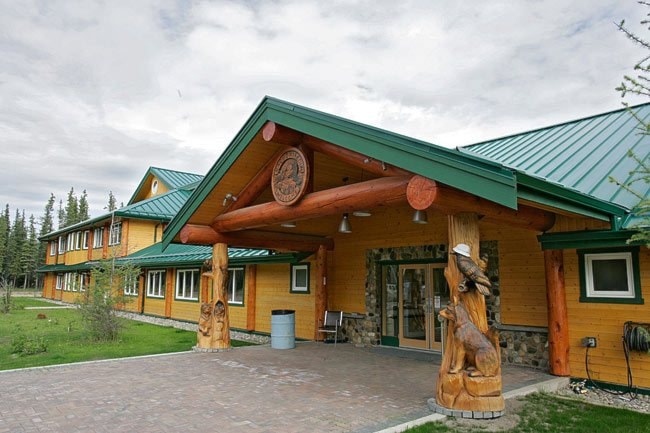The Na-Cho Nyak Dun First Nation is drilling wells for geothermal heat despite problems with older wells in the vicinity.
The Mayo-based First Nation will warm its new government building with pipes that channel heat from beneath the Earth’s surface. The building should cost $70,000 less a year to heat compared to the diesel boilers currently being used, said Rick Savage, an engineer and project manager for Quest Engineering Group, the company directing the project.
The Na-Cho Nyak Dun, the Yukon government and Ottawa are splitting the $2.95-million cost three ways to have the system installed. The First Nation has a 602-person membership.
Construction should begin this year and the system will be up and running by June 2011, said Savage.
A well 120 metres deep must be drilled; a well-house must be constructed and the distribution system throughout the building must be installed. Quest will soon put out tenders for each of the three tasks, said Savage.
Quest was hired to build the government building between 2007 and 2009 and prepped it for a geothermal heating system. A test well near the building was drilled in the last couple of years, said Savage.
The building is just outside Mayo. But in Mayo proper, officials have had harder luck with geothermal energy.
In 1975, a geothermal well was built to heat municipal buildings in the village. Another well was built in 1990. Both were aimed to loosen Mayo’s dependence on fossil fuels, but have barely lived up to potential.
A 2005 report by Gartner Lee revealed the wells, which are only used in winter, need a major rehabilitation program to expand their use.
“The groundwater is highly mineralized, which over time, leads to a combination of corrosive and mineral-encrusting (scaling) related issues,” says the report. The mineralization stands as a “major challenge” in the face of plans to rehabilitate the wells.
And, “based on a detailed review of the available historical draw down data, it appears pumping levels in both wells dropped off significantly within the first year or two after production started,” it says.
The Energy Solutions Centre is still currently looking at expanding the wells in town, according to the centre’s website.
Whitehorse bumped plans to heat its yet-to-be-completed Whistle Bend subdivision in January after wasting hundreds of thousands of dollars on studies.
The city decided to put off any geothermal work until future phases of the subdivision, which are decades away.
City officials didn’t give engineers the right parameters when they commissioned a $241,000 study in 2009, Kinden Kosick, a planner with the city, said in January.
Contact James Munson at
jamesm@yukon-news.com
